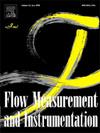A novel method for flow soft measurement of pipeline impact force using Swin-CLG algorithm
IF 2.7
3区 工程技术
Q2 ENGINEERING, MECHANICAL
引用次数: 0
Abstract
In response to the challenge of insufficient accuracy in soft measurement of liquid flow based on impact force in curved pipelines, as identified in previous research (Li et al., 2024), this paper proposes a novel approach that transforms one-dimensional impact force sequence data into a two-dimensional representation. An enhanced Swin-Transformer network architecture is introduced, which integrates a CNN-based feature extraction network with Long Short-Term Memory (LSTM). Furthermore, a Efficient Double Feature layer (EDF layer) and a global attention mechanism (GAM) are incorporated to further refine feature extraction and improve model performance. Experimental results obtained from a fluid impact force and flow collection platform demonstrate that the proposed deep learning model significantly reduces the Mean Absolute Error (MAE) from 7 g to 1.98 g, while increasing the Qualification Rate from 60% to 95%. These findings highlight the substantial improvements in measurement accuracy, underscoring the method’s broad potential and practical value in the field of fluid transport measurement.
提出了一种基于swing - clg算法的管道冲击力流量软测量新方法
针对以往研究(Li et al., 2024)指出的基于弯曲管道冲击力的液体流量软测量精度不足的问题,本文提出了一种将一维冲击力序列数据转换为二维表示的新方法。提出了一种改进的swwin - transformer网络结构,该结构将基于cnn的特征提取网络与长短期记忆(LSTM)相结合。在此基础上,引入了高效双特征层(EDF层)和全局关注机制(GAM),进一步细化特征提取,提高模型性能。在一个流体冲击力和流量采集平台上的实验结果表明,所提出的深度学习模型将平均绝对误差(MAE)从7 g显著降低到1.98 g,合格率从60%提高到95%。这些发现突出了测量精度的实质性提高,突出了该方法在流体输运测量领域的广泛潜力和实用价值。
本文章由计算机程序翻译,如有差异,请以英文原文为准。
求助全文
约1分钟内获得全文
求助全文
来源期刊

Flow Measurement and Instrumentation
工程技术-工程:机械
CiteScore
4.30
自引率
13.60%
发文量
123
审稿时长
6 months
期刊介绍:
Flow Measurement and Instrumentation is dedicated to disseminating the latest research results on all aspects of flow measurement, in both closed conduits and open channels. The design of flow measurement systems involves a wide variety of multidisciplinary activities including modelling the flow sensor, the fluid flow and the sensor/fluid interactions through the use of computation techniques; the development of advanced transducer systems and their associated signal processing and the laboratory and field assessment of the overall system under ideal and disturbed conditions.
FMI is the essential forum for critical information exchange, and contributions are particularly encouraged in the following areas of interest:
Modelling: the application of mathematical and computational modelling to the interaction of fluid dynamics with flowmeters, including flowmeter behaviour, improved flowmeter design and installation problems. Application of CAD/CAE techniques to flowmeter modelling are eligible.
Design and development: the detailed design of the flowmeter head and/or signal processing aspects of novel flowmeters. Emphasis is given to papers identifying new sensor configurations, multisensor flow measurement systems, non-intrusive flow metering techniques and the application of microelectronic techniques in smart or intelligent systems.
Calibration techniques: including descriptions of new or existing calibration facilities and techniques, calibration data from different flowmeter types, and calibration intercomparison data from different laboratories.
Installation effect data: dealing with the effects of non-ideal flow conditions on flowmeters. Papers combining a theoretical understanding of flowmeter behaviour with experimental work are particularly welcome.
 求助内容:
求助内容: 应助结果提醒方式:
应助结果提醒方式:


